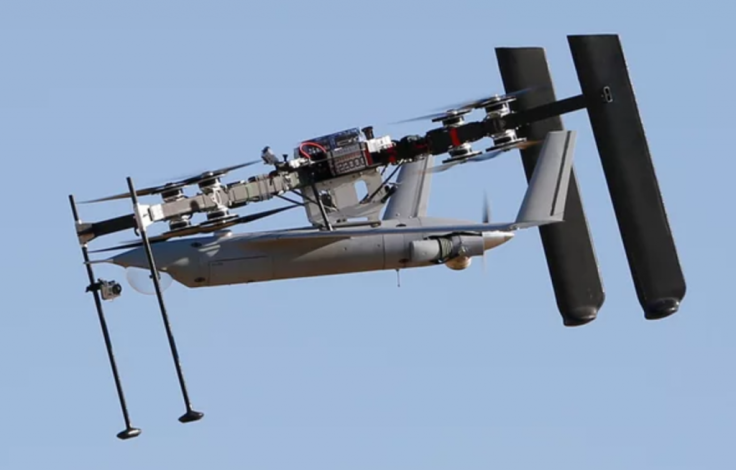ScanEagle: Quadcopter drone system launches military UAV into the sky and then catches it

One of the older military drones still in service has been given an upgrade – it will now come with a quadcopter drone whose job is to launch it into the sky and then come back and pick it up when its mission is done.
This odd-sounding concept is the basis of a new system called Flying Launch and Recovery System (FLARES), which is designed to upgrade the 13-year-old Boeing Insitu ScanEagle, which was built in 2002 and was used for a decade by the US Navy, the US Marine Corps, the Australian Army, the Canadian Army and the Tunisian Army.
The ScanEagle was originally designed to be a commercial unmanned aerial vehicle (UAV) used for fish-spotting and collecting weather data but it was eventually co-opted to perform autonomous surveillance on the battlefield for the military, starting with the Iraq War in 2004.
In size, the ScanEagle has a 10.2ft wingspan, is 4.5ft long and weighs 20kg. This means it is considered to be a "small drone" when compared to other military drones, and would in fact be just within the class of the newer consumer drones.
However, the ScanEagle travels much faster at a speed of up to 80 knots (92mph), and it is one of the few mid-range drones that the US Federal Aviation Authority (FAA) has authorised for commercial use, which makes it attractive to the many businesses now trying to make a name for themselves by developing new use cases for UAVs.
How FLARES works
Although the ScanEagle is much more portable than other military drones, its one major drawback is that it is not able to take-off or land by itself. The traditional way the drone works is by taking off from a catapult launcher, and once it is ready to return to base, a powerful hook has to snag it out of the sky.
Instead, FLARES works by having a large quadcopter drone tow the ScanEagle high up into the air and then release it. The ScanEagle soars off and once it has completed its mission, the quadcopter drone then latches on to it in the air and carries it back home again.
It might sound complicated having to use two UAVs instead of just building a single more powerful drone, but it works because drones that have been built to take-off and land vertically are not really designed to travel over long distances at speed.
A fixed-wing drone is able to handle long distance travel better but then it requires a runway to take off from, so FLARES is a combination of the two different strengths of the drones, while extending the lifetime of the ScanEagle.
© Copyright IBTimes 2025. All rights reserved.






















